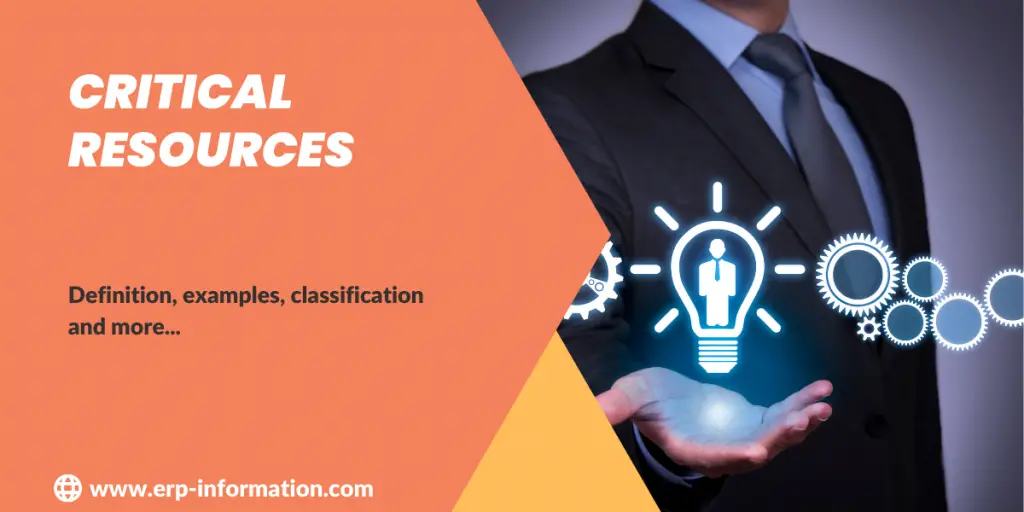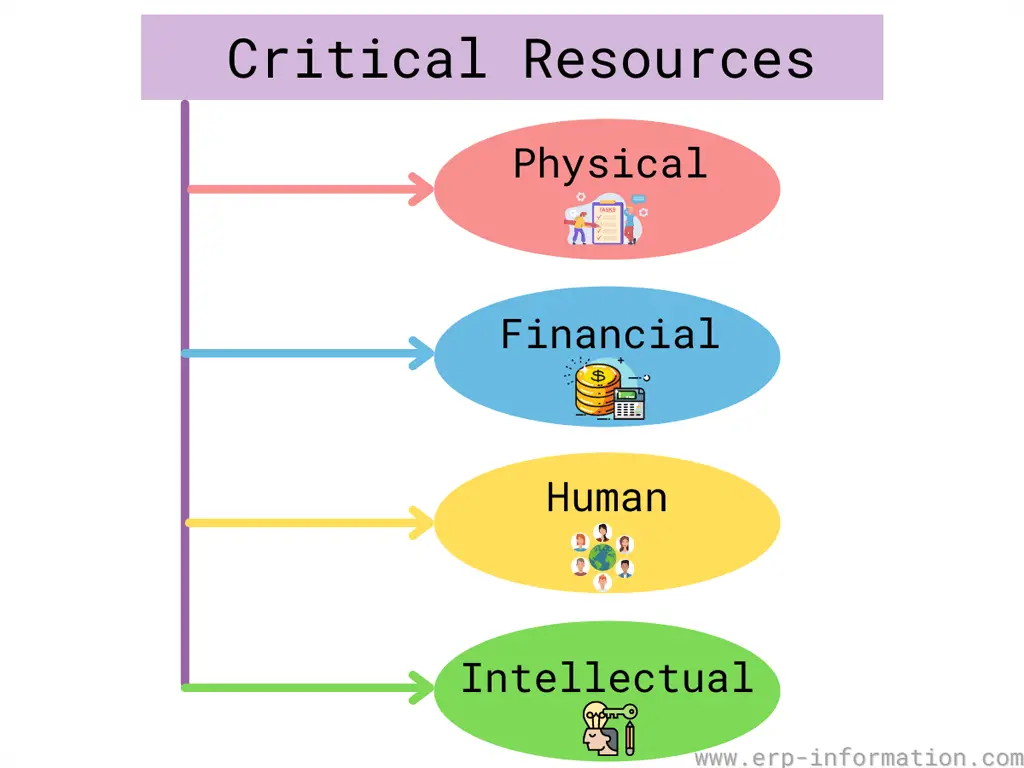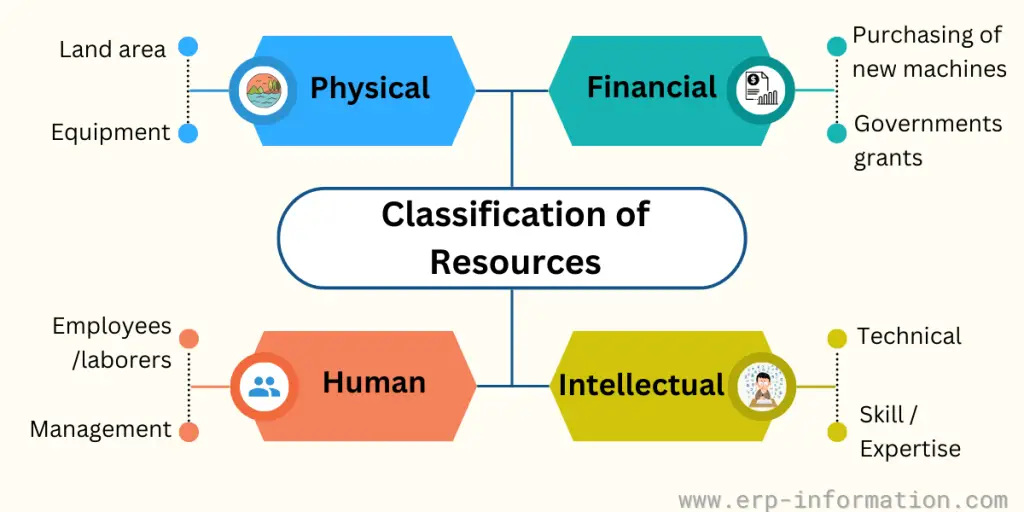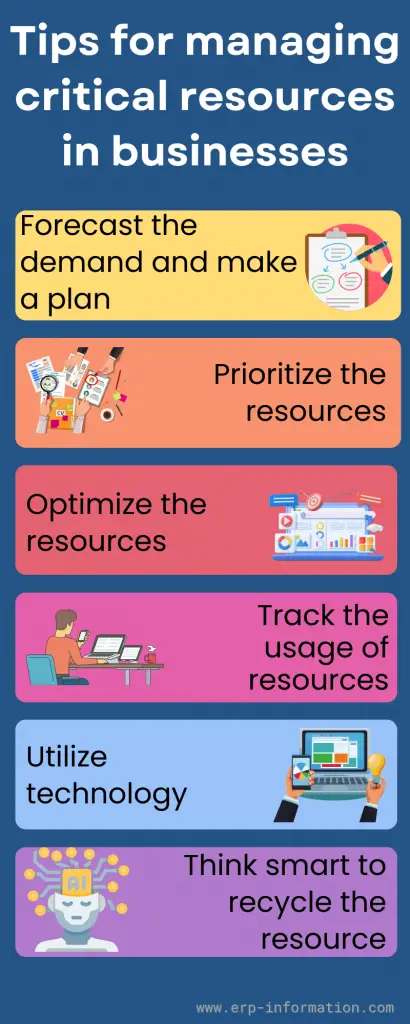Every organization, irrespective of its size or industry, relies on a vast array of resources to function and flourish. These resources encompass not only the obvious pillars of financial, human, and technical assets but also extend to seemingly boring elements like office space and specialized equipment.
But what makes these resources ‘critical,’ and why do they hold a paramount position in the grand scheme of an organization’s operation? The answer lies in their fundamental role in sustaining the heartbeat of the enterprise and steering it towards the achievement of its objectives.
This blog post will discuss critical resources in the context of business and how to identify them in your business, the essence of their importance, and their undeniable impact on the success of any organization. It will also uncover the reasons why organizations need these resources.
Critical resource definition
Critical resources definition can be summed up as those resources essential for the organization to continue operating and achieve its stated goals. Typically, these would be financial, human, or technical resources but could include other items such as office space or specific equipment.
It’s essential to understand which resources are critical and which are not to make informed decisions about where to allocate your limited resources.
For example, if you know that certain employees are essential to your operation, you must ensure that you have enough funds to compensate them adequately. Alternatively, if you determine that a piece of technology is critical to your success, you may need to make budgetary sacrifices to acquire it.
Four characteristics of a critical resource
A critical resource is a limited resource necessary for the survival or success of an organization or system. It is often essential for production, and few substitutes may be available. The four characteristics of a critical resource are,
- It is in short supply and cannot be easily replaced.
- There are few substitutes available.
- It is necessary for the functioning of the organization or system.
- Its loss would lead to significant disruptions or failure.
Critical resources examples
Some critical resource examples are oil, water, and natural gas. All three are essential for modern life and society to function.
For example, oil is used to produce gasoline for vehicles, water is used for drinking and hygiene purposes, and natural gas generates electricity.
Other critical resources include aluminum, copper, and iron ore. These minerals are needed to produce electronic devices, automobiles, and other essential goods for modern life.
Essential resources examples
There are several essential resources that every organization needs to function correctly. Some of the most important include personnel, financial resources, physical resources, and intellectual resources.
Personnel is essential for an organization because they provide the staffing necessary to carry out its activities. In addition, financial resources are needed to pay for the organization’s expenses, such as employee salaries and rent.
Physical resources consist of things like office space and equipment, while intellectual resources include things like patents and trademarks.
Let us have a look at resources in a company. Resources can be broadly classified into four types.
Classifications
Below are classifications of resources.
Physical
- Land or area: This is also one of the resources that can be critical. You may consider it an exceptional resource. But it is a necessary resource for all businesses. For example, If you want to open a small consulting agency, it requires some area. If you’re going to test some chemical or something, you need a lab. Again it is the area. To store your inventories, you need a place. That is the land.
- Equipment: This one is also an essential resource for a company. Companies must have the necessary and sufficient equipment to fulfill their needs.
Financial
- Purchase of new machines: New equipment is a much-needed resource for all manufacturing industries.
- Government grants: Legal permission from the government is also necessary for some businesses such as chemical industries, food industries, pharma industries, etc.
Human
- Employees /laborers: You can call this resource a pillar of other resources because labor is essential in all businesses.
- Management: Guiding or managing the work is also vital for an organization. Hence, we consider management as one of the critical resources.
Intellectual
- Technical: These days, most businesses run through an automated process. So it would help if you had a solid technical team. That means you should have employees with sound technical knowledge.
- Skill / Expertise: Organizations must have skilled or expert employees to execute the business successfully.
Tips for managing resources
Forecast the demand and make a plan
Figure out the demand and determine what resources you need and what you can do without them. Then, plan to make sure you’re using your resources in the most efficient way possible.
Prioritize the resources
Some resources are more important than others. For example, while manufacturing a product, equipment and the employee who handles that equipment is more important than intellectual resources. So figure out which ones are most necessary and focus on those first.
Optimize resources
One way to get the most out of your resources is to optimize them so that employees are not overworked or burned out. That can be done by carefully planning and delegating tasks and setting realistic deadlines and expectations.
Track usage
Keep track of how much of each resource you’re using so you know when you need more and can make any necessary adjustments.
Utilize technology
Technology can help you save time and money by allowing you to do more with less. For example, using online tools for communication and collaboration can help reduce the need for costly meetings or conferences.
These advancements also enable us to do more with fewer man-hours, making it easier to optimize productivity at a fraction of the cost.
Think smart
Sometimes, finding alternative ways to use resources or even recycle them to save money and conserve space is possible.
FAQs
What is critical resource meaning?
It is a resource whose availability or continued supply is essential to an organization’s survival, security, or success.
For example, a critical resource might be electricity in a business context: the business would be unable to function without it.
Other examples might include water, natural resources like oil and gas, and human resources like employees and managers.
What is critical resource employee meaning?
A critical resource employee is a worker who provides input to the company but whose services cannot be easily replaced by another individual or company. In addition, these employees often have unique skills and knowledge that are difficult for other companies to replicate.
Including them as part of your workforce is essential enough not to let go but not so important that it would cost too much if they left.
In many cases, these workers will receive benefits such as health insurance and paid time off work mainly because their employer values their contributions enough that it would be difficult otherwise.
What is the most critical resource in management?
The most critical resource in management is time. Time is the most precious commodity any manager has and must use efficiently to accomplish tasks and objectives.
Time pressure creates a sense of urgency and can spur creative problem-solving. However, time pressure can lead to tunnel vision, errors, and rushed decisions.
Managers need to create efficiencies within their workday to make the most of their time while still meeting deadlines. Some tips for managing time effectively include setting priorities, planning, and delegating.
Conclusion
Critical resources are an essential part of running a successful business. However, many small businesses don’t know these vital resources or identify them.
The most important thing is to determine the company’s primary purpose and then decide which assets will be needed to accomplish that goal.
For example, if you’re in charge of making inventory for your store, one asset necessary would be shipping containers so that all your products can get delivered without being damaged during shipment.
We hope this blog post is useful for you.



